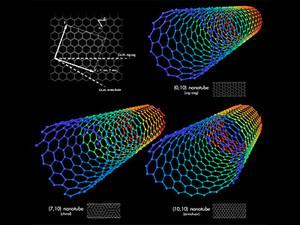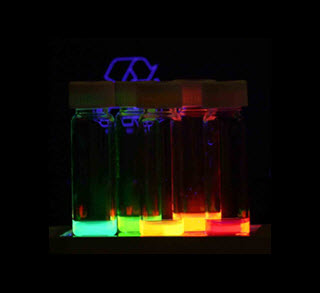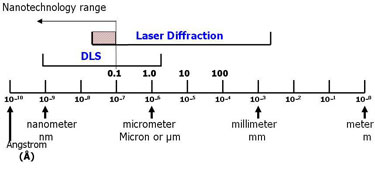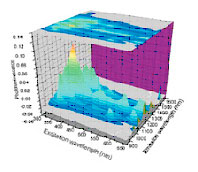

Nanotechnology is not an industry, but rather a broad based field of study focused on materials and applications occurring at a very small scale. In general most people accept that nanotechnology deals with structures that are 100 nanometers (nm) or smaller and involves developing materials or devices within that size. Tools such as the SZ-100V2 Nanoparticle Analyzer utilize dynamic light scattering technology to characterize these materials.
Nanotechnology is extremely diverse, ranging from novel extensions of conventional device physics, to completely new approaches based upon molecular self-assembly and to developing new materials with dimensions on the nanoscale. Materials reduced to the nanoscale can show different properties compared to what they exhibit on a macroscale, enabling unique applications.
Visit our What is a Nanoparticle page to read about the scope of nanotechnology.
Particle technology intersects nanotechnology when scientists need to determine the particle size distribution and zeta potential (surface chemistry) of materials in the nanoscale. Examples of particles at the nanoscale that have generated interest include (but certainly not limited to):

Figure 1: Carbon Nanotube Structures

Figure 2: Quantum Dots Undergoing Fluorescence
Particle size analysis in the range below 100 nm can be performed using a variety of techniques. Within the HORIBA product line the following systems function on the nanoscale:
HORIBA SZ-100V2 Dynamic Light Scattering Analyzer
HORIBA LA-960V2 Laser Scattering Particle Size Distribution Analyzer
Figure 3 shows the size scale from 1 Angstrom to 1 meter along with the dynamic range of each system mentioned above. As you can see, there is overlap in the sub 100 nm range. Each technique and system has specific advantages depending on the application.

Figure 3: Size Range for Nanoparticle Detection
HORIBA provides several other analytical systems appropriate for nanotechnology applications including the NanoLog Spectrofluorometer for nanomaterials.
> More information on the NanoLog®.

Photoluminescence (PL) excitation-emission matrix of single wall carbon nanotubes (SWCNT) that can be used to obtain diameter information.
NIST has recently created a series of gold nanoparticles with certified mean diameters. The three new materials (gold spheres nominally 10, 30 and 60 nanometers in diameter) were developed in cooperation with the National Cancer Institute's Nanotechnology Characterization Laboratory (NCL). RM8011, RM8012 and RM8013 can be purchased from the NIST website and be used to verify the performance of particle size analysis instruments. See NIST Particle Size Standards for a complete list of particle size standards available through NIST.
The National Nanotechnology Initiative (NNI) is a government program established in 2001 to coordinate federal nanotechnology research and development.

The goals of the NNI include:
The NNI website provides much useful information for anyone interested in nanotechnology and wishing to learn how the United States is supporting research centers across the country.
Nanoparticle Analyzer
Laser Scattering Particle Size Distribution Analyzer
Simultaneous Multi-Laser Nanoparticle Tracking Analysis (NTA)
DeltaRAM-X based millisecond ratio fluorescence QuantaMaster spectrofluorometer
Do you have any questions or requests? Use this form to contact our specialists.